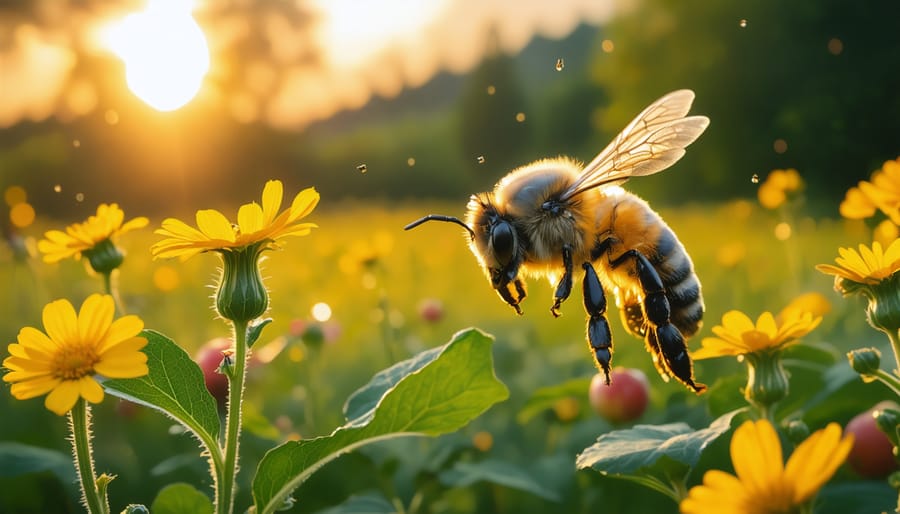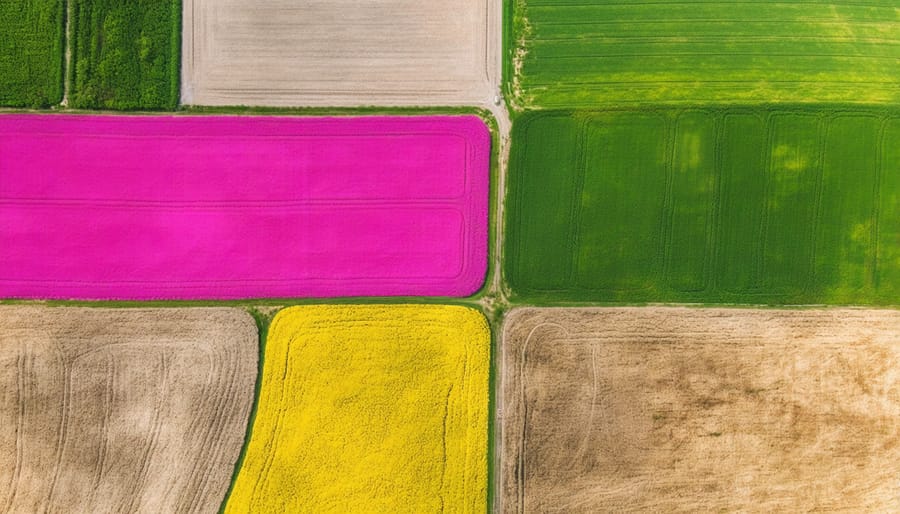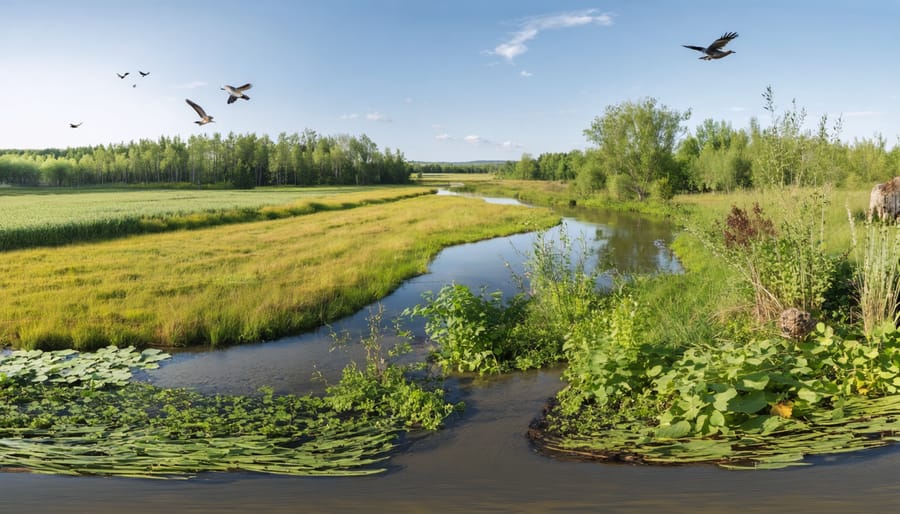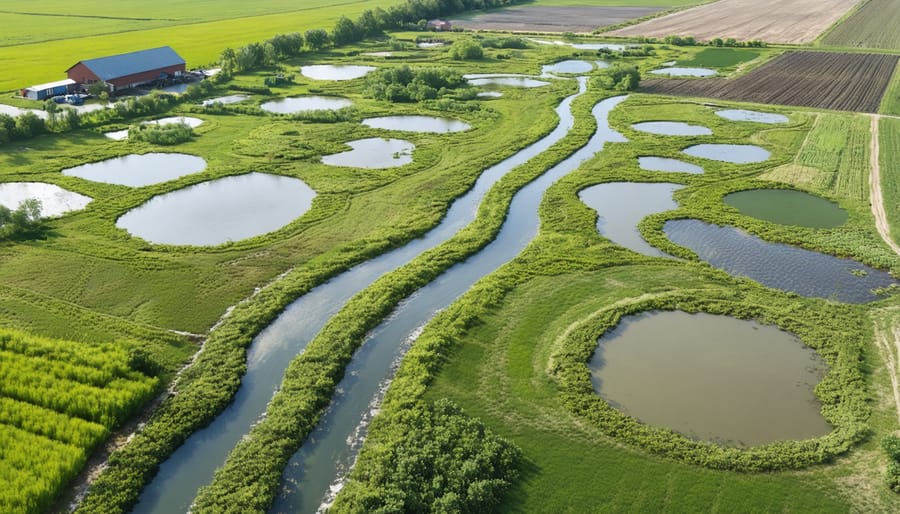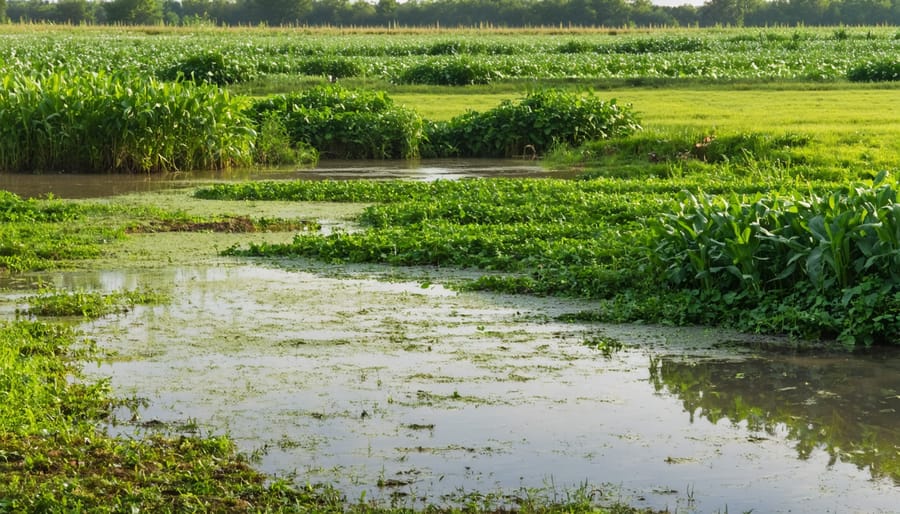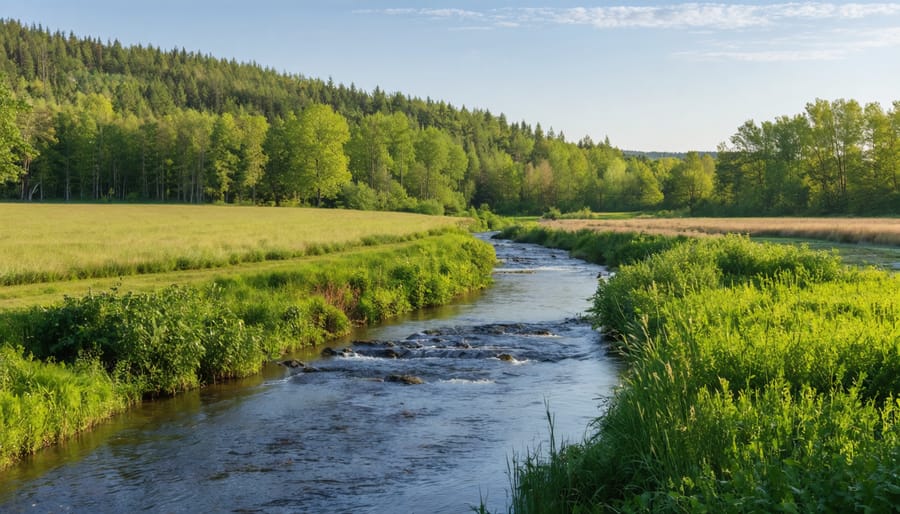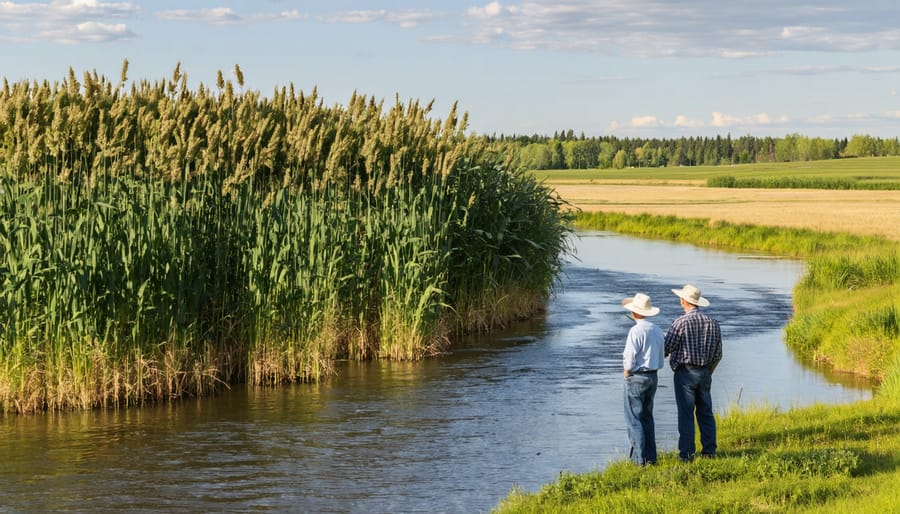Bees are the unsung heroes of agriculture, quietly powering the production of over a third of the world’s crops through pollination. These tiny workers play an outsized role in ensuring food security, biodiversity, and the livelihoods of farmers worldwide. As concern grows over declining bee populations, it’s time to shine a light on the critical importance of these buzzing allies and explore how modern agriculture can evolve to protect and promote their invaluable contributions. This article delves into the fascinating world of bees in agriculture, examining their impact, the challenges they face, and the innovative solutions being developed to create a more bee-friendly future for farming.
Pollination Power
The Pollination Process
Bees play a crucial role in the pollination process, which is essential for the reproduction of many flowering plants, including numerous agricultural crops. As bees gather nectar and pollen from flowers to feed their colonies, they inadvertently transfer pollen grains from the male parts (anthers) of one flower to the female parts (stigma) of another flower. This transfer of pollen enables fertilization, allowing the plant to develop seeds and fruit.
Bees are particularly effective pollinators due to their hairy bodies, which easily collect and transport pollen grains as they move from flower to flower. They also tend to focus on one type of flower at a time, increasing the likelihood of successful pollination within a species. This behavior is crucial for maintaining genetic diversity and ensuring the development of healthy, viable seeds.
In Canada, bees are responsible for pollinating a wide variety of crops, including apples, blueberries, canola, and alfalfa. The pollination services provided by bees contribute significantly to the quantity and quality of these crops, directly impacting the success and sustainability of Canadian agriculture. By understanding and supporting the pollination process, farmers can create an environment that fosters healthy bee populations and, in turn, enhances crop yields and overall agricultural productivity.
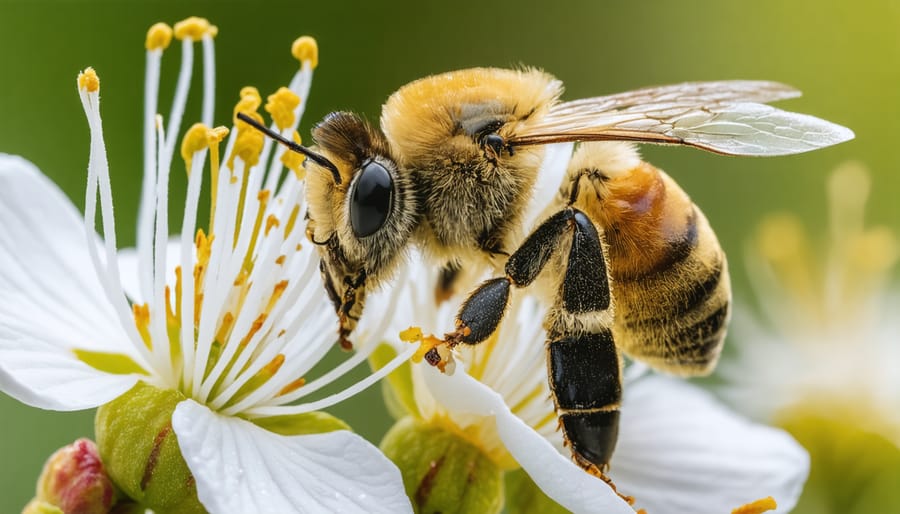

Crops That Depend on Bees
Bees play a vital role in pollinating many important food crops across Canada. In fact, over 70% of the world’s top 100 crop species rely on bee pollination to some degree. Key crops in Canadian agriculture that depend on bees include apples, blueberries, canola, cherries, and squash. Bees are essential for the production of Canada’s blueberry crops, with native bee species like bumblebees being particularly effective pollinators. Canola, a major crop in Alberta and Saskatchewan, also benefits greatly from bee pollination. Studies have shown that bee pollination can increase canola yields by up to 46%. Other crops such as tomatoes, peppers, and cucumbers grown in greenhouses also rely on the pollination services provided by managed bees. Without bees, the yields and quality of these crops would significantly decline, emphasizing the importance of supporting and protecting bee populations in agricultural landscapes across Canada.
The Bee-Friendly Farm
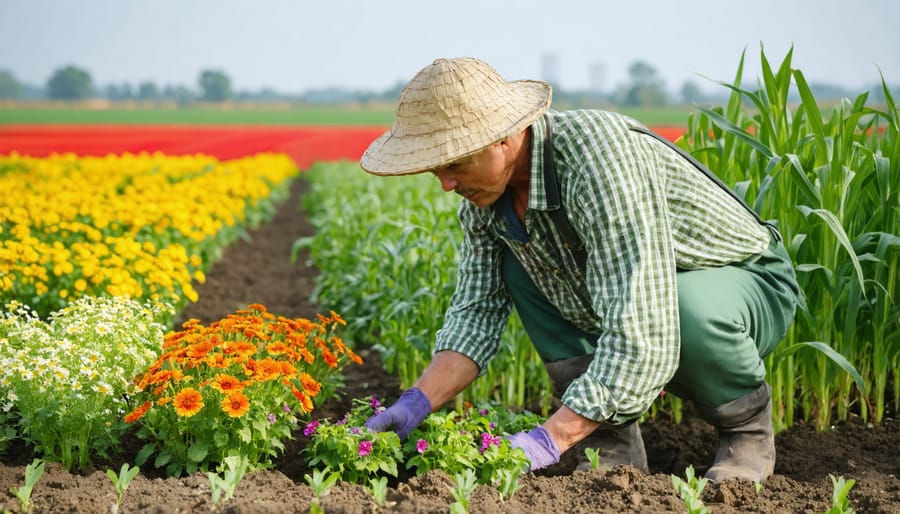
Planting for Pollinators
Supporting bees on your farm starts with planting a diverse array of native flowering plants that provide essential forage from spring through fall. In Alberta, consider including wild bergamot, goldenrod, aster, and native clovers in your pollinator patches or field borders. Aim for a continuous bloom throughout the growing season to ensure a reliable food source for bees. When selecting plants, prioritize those adapted to your local climate and soil conditions for the best results. Consult with local conservation organizations or extension services for region-specific recommendations. By dedicating even small areas of your farm to pollinator-friendly plants, you can create vital habitats that support both wild bee populations and the health of your crops. Encouraging other farmers in your community to adopt similar practices can amplify the positive impact on local bee populations and contribute to a more sustainable agricultural landscape.
Integrated Pest Management
Integrated Pest Management (IPM) is a proactive approach that can help protect bees while maintaining crop health. By using targeted spraying techniques and minimizing pesticide use, farmers can reduce the risk of harming beneficial insects like bees. IPM strategies include monitoring pest populations, setting action thresholds, and using a combination of biological, cultural, and physical controls before resorting to chemical interventions. When pesticides are necessary, opting for bee-safe alternatives and applying them during times of low bee activity can mitigate the impact on pollinators. Additionally, planting trap crops and encouraging natural predators can help manage pest populations without relying heavily on pesticides. By adopting IPM practices, Canadian farmers can create a more sustainable and bee-friendly agricultural system that benefits both their crops and the environment. Remember, every effort to protect our pollinator partners contributes to the long-term health and productivity of our farms and food supply.
Providing Bee Habitats
To support native bee populations on your farm, creating suitable nesting sites and overwintering habitats is essential. Solitary bees, which make up the majority of native bee species in Canada, require specific conditions to thrive. Provide a variety of nesting options such as drilled wooden blocks, hollow plant stems, and bare soil patches to accommodate different bee species’ preferences. Brush piles, leaf litter, and standing dead wood offer shelter during the winter months.
Consider setting aside undisturbed areas on your farm as dedicated bee habitats. These can include field margins, hedgerows, or sections of native vegetation. By allowing these areas to grow without interference, you create a haven for bees to nest and forage throughout the growing season.
Planting a diverse array of native wildflowers and flowering cover crops provides essential food sources for bees. Aim for a continuous bloom period from early spring to late fall to support bee populations during critical life stages. Consult local experts or reference guides to select plant species that are well-suited to your region and attractive to native bees.
By integrating these habitat enhancements into your farm’s landscape, you actively contribute to the conservation of native bee populations while benefiting from their pollination services in your crops.
Supporting Bee Health
The Threat of Varroa Mites
Varroa mites are a significant threat to honeybee colonies in Canada and worldwide. These tiny parasites attach to bees, weakening them by sucking their hemolymph (blood) and transmitting viruses. Infested colonies often experience reduced honey production, decreased winter survival rates, and even total colony collapse. To protect your hives from Varroa mites using organic methods, consider implementing integrated pest management (IPM) strategies. This approach involves monitoring mite levels regularly using sticky boards or alcohol washes, and taking action when thresholds are exceeded.
Organic treatments like formic acid and oxalic acid can help control mite populations without harming bees or contaminating honey. Additionally, breeding Varroa-resistant queen bees and practicing good hive management techniques, such as removing drone brood and replacing old comb, can further reduce mite pressure. By staying vigilant and proactively addressing Varroa mite infestations using organic methods, Canadian farmers can support the health and resilience of their honeybee colonies, ensuring effective crop pollination and sustainable agricultural practices.
Partnering with Beekeepers
Fostering partnerships between farmers and local beekeepers can be mutually beneficial for agriculture and pollinator health. By hosting beehives on their property, farmers provide beekeepers with access to diverse forage sources while ensuring reliable pollination services for their crops. This collaboration also promotes knowledge sharing, as beekeepers can offer valuable insights into bee behavior and health, while farmers share their understanding of local flora and sustainable farming practices.
To establish a successful partnership, farmers should reach out to local beekeeping associations or individual beekeepers to discuss hosting hives on their land. Together, they can identify suitable locations that provide ample forage and are safely distanced from areas treated with pesticides. Beekeepers can also advise on creating additional pollinator habitats, such as wildflower strips or hedgerows, to support bee populations throughout the growing season.
By working hand in hand, farmers and beekeepers in Canada can contribute to the long-term sustainability of both agriculture and pollinators. These partnerships not only bolster crop yields and honey production but also serve as a model for community-driven solutions to environmental challenges. Through open communication, shared resources, and a commitment to best practices, farmers and beekeepers can build a thriving ecosystem that benefits all.
Conclusion
Bees and farmers are vital partners in the agricultural landscape, working together to sustain our food systems. As we’ve seen, the humble bee plays an outsized role in pollinating our crops and ensuring bountiful harvests. Without these tireless workers, many of our favorite fruits, vegetables, and even the alfalfa that feeds our livestock would vanish.
As stewards of the land, it’s up to us to protect pollinators and create environments where they can thrive. By planting diverse, native wildflowers, leaving some areas untilled, and using integrated pest management strategies, we can create a haven for bees on our farms.
The benefits extend beyond our own fields – by supporting healthy bee populations, we contribute to the resilience of our entire agricultural community. When we come together to support sustainable agriculture practices, we all win.
So let’s roll up our sleeves and get to work building a future where bees and farmers can continue their age-old partnership. By taking action today, we sow the seeds for a vibrant, sustainable tomorrow. Together, we can ensure that the gentle hum of bees remains a constant soundtrack to the rhythms of farm life for generations to come.

